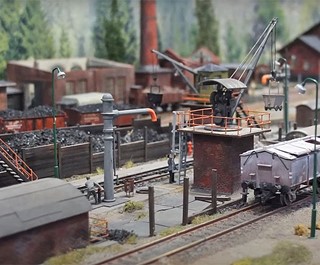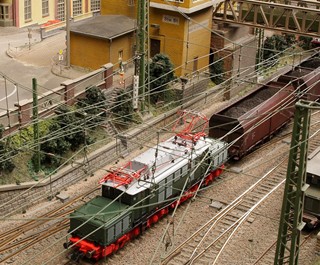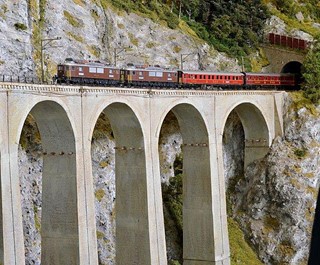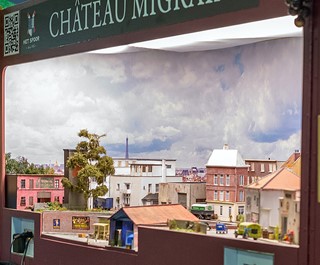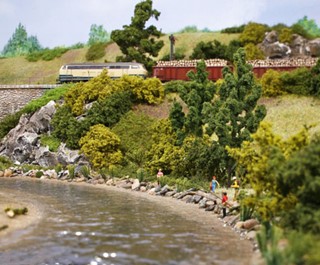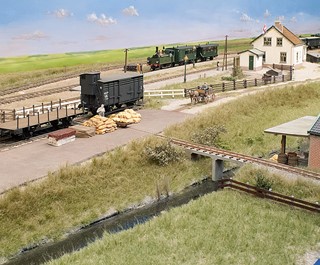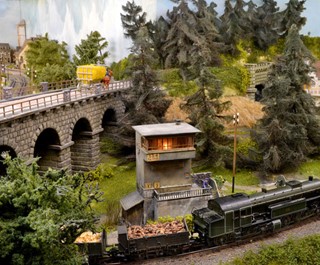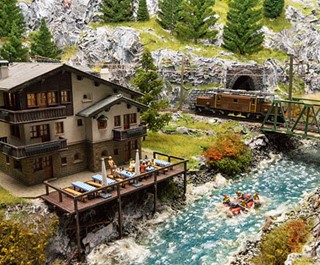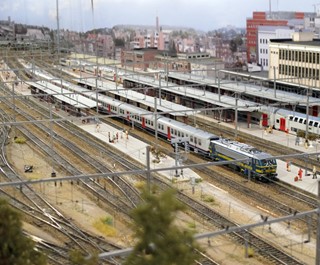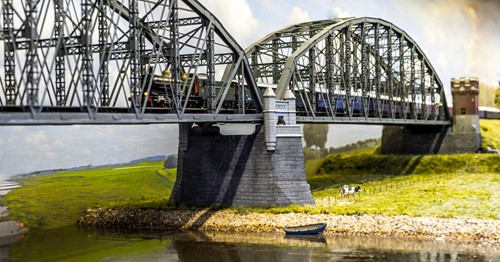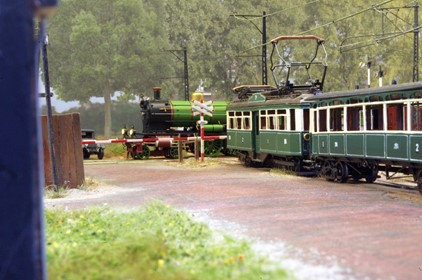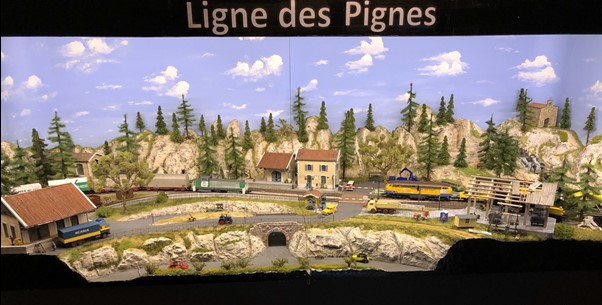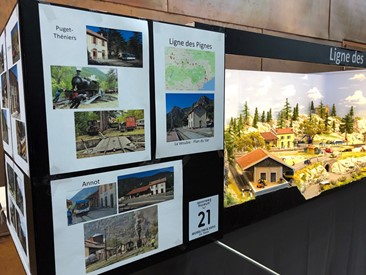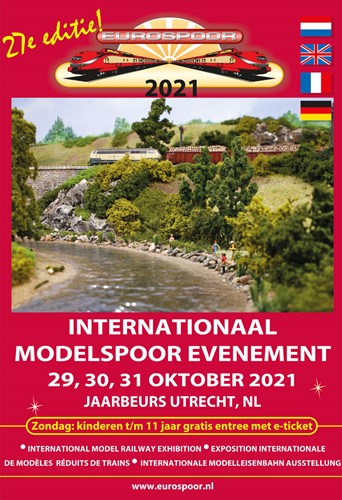Now for the 27th time Model railway buffs should be getting ready for Europe's largest model railway event, EUROSPOOR, which takes place this year in the Jaarbeurs (trade fair centre) in Utrecht, the Netherlands on 29, 20 and 31 October 2021. A surface area of 15,000 square meters will offer visitors the chance to view over 50 model railways belonging to clubs from the Netherlands as well as other countries, extensive model train collections, working miniatures smaller than your little finger (Z-gauge) and also enormous specimens weighing many kilograms each (gauge 1), model-making demonstrations, stands of representatives and retailers, a model railway market of appr. 800 meter length where train-lovers offer their used trains, accesories and collectors' items for sale or exchange.
The Rhenen 1935 model railway by Gert Arkema shows the prototypical reconstructed Rhenen station before the war. Not only is the station itself present with its shunting yard and track excavation, you can also see part of the well-known railway bridge over the Rhine to Kesteren, which was lost in the war.
In addition, of course, some characteristic scenes that were to be found around the station are also depicted; such as the messenger driver, the houses on the Zwarteweg, the floodplains with cows and the green tram of the NBM that is waiting in front of the railway barriers.
This layout is also driven prototypically with a variety of steam locomotives with accompanying trains from that period; both compartment cars and transit cars, equipment manufactured in-house. For those who still know the station from their own observation, a feast of recognition, for those who know the station from photos (for example from the May days of 1940) a feast of recognition. And for all who are locally known a picture of how it could have been.
The diorama is inspired by a local line in the South-East of France. It concerns a line in Provence largely located along the river Var from Nice to Digne le Bains. Along the line are several small stations and transfer points located in a typical architectural style for the region. The buildings on the track are largely self-build.
The name "Ligne des Pignes" (pinecone line) probably stems from earlier times when, due to a lack of coal, the boilers of the locomotives were also fired with the abundantly present pinecones.
The layout is controlled digitally by computer. The turnouts and signals equipped with decoders, together with block detection, enable automated routes.
Behind the track is an automatic shadow station with space for 8 trains. The whole is finished with frieze, LED lighting and skirt.
"Bad Claustal", Modelleisenbahnverein "Friedrich List" Leipzig e.V.
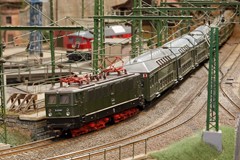
Bad Claustal is a very impressive layout in H0 by Friedrich List e.V. This club is very active, but their layouts can mainly be admired at shows in Leipzig and Dresden.
Fortunately, we have good contacts with this club so that we can also enjoy their arts at Eurospoor! The average model railway module is often only 60 cm wide, but that's not the case at Friedrich List. This 15 m long modular track is at least a proud 1.50 m wide.
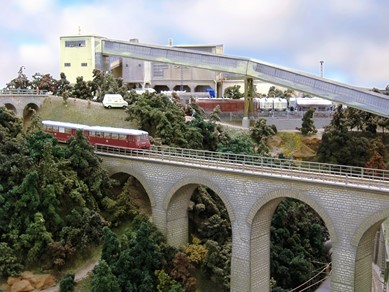
The plan for this large-scale track originated in 1988 when a home track was built for a model railway fan of the association. Distinctive and interesting buildings of the former DR had to be reproduced. The following standards were then set. The two-track main line must lead through a low mountain range. There should be a branch at the station, which meanders through the "mountains" to the upper station "Marienhütte". The station "Marienhütte" has a factory connection to the lime factory with frequent shunting operations.
Due to its length of 15 meters, realistically long trains can be driven. In order to also be able to use electric locomotives, overhead wires have also been carefully installed. The result was a catenary system that closely resembles the original, in which, in addition to the contact wire and masts, power supply, insulators and protective grids have not been forgotten. The overhead wires in general and especially the overhead wires of the entire station span are one of the many special features of this layout.
De Bimmelbahner, romance from Saxony
"De Bimmelbahner" are the builders of a Saxon modular railway. The single-track route winds through a romantic model landscape and in the meantime makes several stops. The route leads over small streams, through forests and past half-timbered houses. The rolling material on the track and the motifs used make it clear that the builders focused on the GDR and Epoche III (1949-1970) in terms of theme. At that time, steam was still used. Many other lovingly designed details show the high quality of this Hoe (1:87) narrow gauge railway.
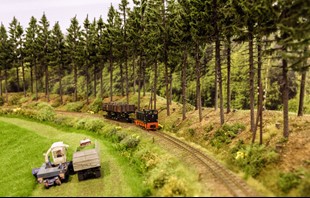
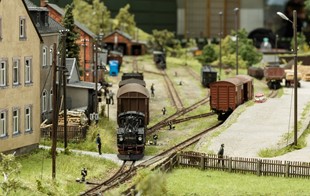
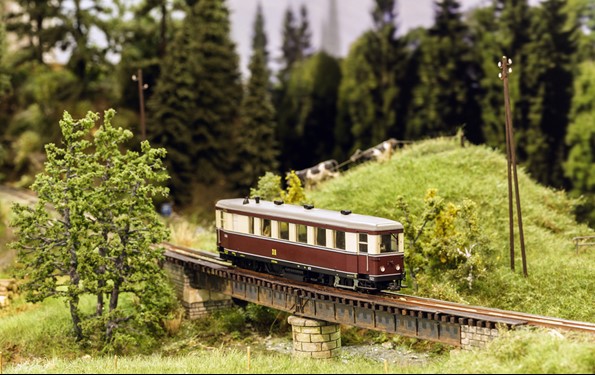
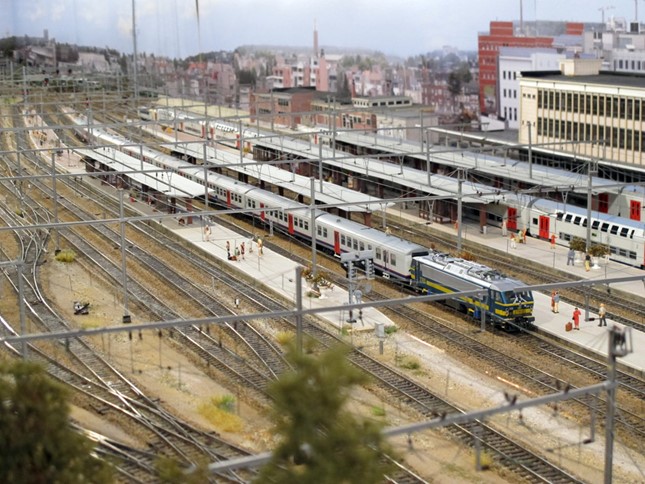
Hasselt 2002 - Ivo Schraepen
After about 100 visits to Hasselt station and certainly more than 1000 photos, we started the construction of the miniature track in 2003. Interest in the site grew over time, eventually 15 years later the layout is ready. This layout is built as the station and the tracks were in Hasselt in 2002. The stretch from the St.-Truidersteenweg bridge to the Grote Ring bridge (Hendrik van Veldekesingel) is fully scaled. In reality, the route is 1.6 km and more than 16 meters on the layout. The entire layout takes up an area of 20 x 5 meters in total. The time setting for 2002 has been deliberately chosen in order to be able to drive both the old traction stock and the new locomotives. From 2000, numerous new locomotives entered service and the old traction equipment was systematically phased out. Reconstructing an existing example to scale is difficult and requires compromises, but we have nevertheless tried to represent the time atmosphere and train activities correctly.
The backgrounds
For the realization of the backgrounds, we made a photo report on May 27, 2011 along the Fonteinstraat and the Spoorwegstraat. This was done with an aerial platform. Most of the photos were taken at a height of around 24 meters. As you could have guessed, the weather was cloudy that day with regular rain. After the photo report, it became a 3 month job to process more than 500 photos into a background that is as realistic as possible and to give the whole thing a sunnier look. So what you see is really Hasselt as it was then.
Improvements
The track has undergone many improvements in recent years. Various networks provide train protection and route planning. About 8 cameras allow to observe the front and back of the track from the checkpoint. There's even a camera built into the track checkpoint. This allows you to see the trains passing by realistically.
Modules
This layout is a "segment track", the station part consists of 11 segments or parts, each piece is specific and fits without screws or mounting on the next. The electrical connections automatically slide together when the track is set up. At the left and right ends, 4 additional custom segments have been built to allow the trains to turn. The other side of the track consists of 6 parts each with 7 tracks to adjust the long trains.
Automation
The main idea is that it is unpredictable which train will pass the station. The travel route is determined by a computer application, so any free track can be chosen as in reality. All tracks can also be used in both directions. This high complexity can of course only be controlled with a fully automated digital approach. For enthusiasts, you can certainly walk by during the exhibition for extra information, we always provide extra information and photos of the bottom of the track, which is full of motors, cables and digital equipment.
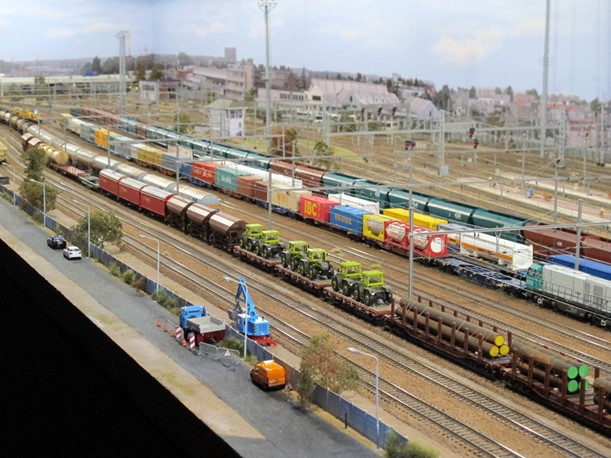
De “Stolberger Spitzkehre“ in model - Spijkspoor (NL)

The Model Railway Club “SPIJKSPOOR” from Spijkenisse warmly welcomes you to your visit to its segment railway called "Stolberger Spitzkehre" and wishes you a lot of fun watching the various scenes. If you have any questions about parts of the presentation, do not hesitate to contact one of our members. They can then provide you with further information or put you in touch with a member who is a specialist in the field of your question.
The idea for this layout arose at the beginning of 2014 when some members proposed to build in a new scale for MSC Spijkspoor, namely 0-gauge / 1:45. In a search on the internet, the (unfortunately no longer present) short track section (3.5 km) from Stolberg to Münsterbusch (near Aachen) caught our attention. The "Spitzkehre" used here is an interesting theme for a show track. With a few exceptions, it concerns pure freight transport on this section of the line, to provide access to the zinc blast furnaces, the rolling mill, the zinc white factory and other industries.
The 3.5 km short section from Stolberg station, near Aachen, to the Zinkwerk on the Münsterbusch plateau served as an example. Because a so-called Spitzkehre was a bitter necessity at that location due to the large differences in height, this special shape of the layout was created in model. While the environment around the houses of Spinnereistrasse is almost a copy of reality, elsewhere it is more the environment as it could have been interpreted. However, this was only possible with the special help of Mr. Roland Keller, who, as a teenager, lived along this section of the line, extensively photographed trains, route, station and surroundings and helped us selflessly with many hundreds of detailed photos.
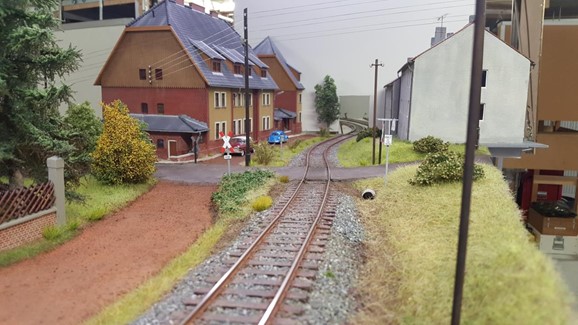
You imagine yourself back in time, in the summer of 1968. You have arrived in the town of Münsterbusch, municipality of Stolberg near Aachen in Germany. At low speed, a BR50 steam locomotive crawls uphill, close between the houses, to finally reach the end station of Münsterbusch via the "Spitzkehre" necessary for geological conditions. The companies located there, including the zinc factory, use the railway for loading and unloading. A little further on, in the workshop of the Bahnmeisterei, people are working hard to repair various things. At the scrap trade, valuable materials are collected and sorted from the scrap delivered by rail. Sufficient building materials are available in the field of the building materials trade.
In stark contrast to the bustle around the station, you can simply enjoy the beautiful summer weather on the Gasthof terrace, sipping a refreshing beer and looking out over the meadows with cows and rapeseed fields. In the meantime, at the gas station annex garage, your car will be checked so that you can continue on your way with peace of mind. Look, listen, smell, and taste the atmosphere of the late 60s.
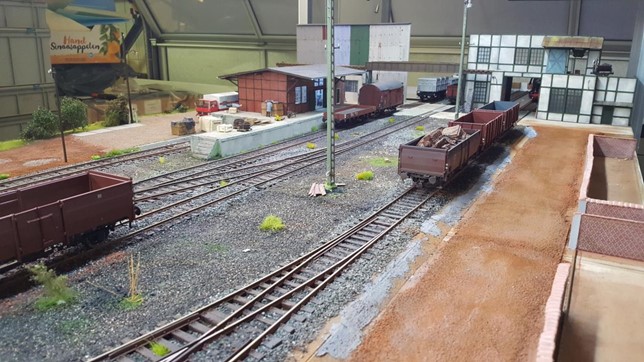
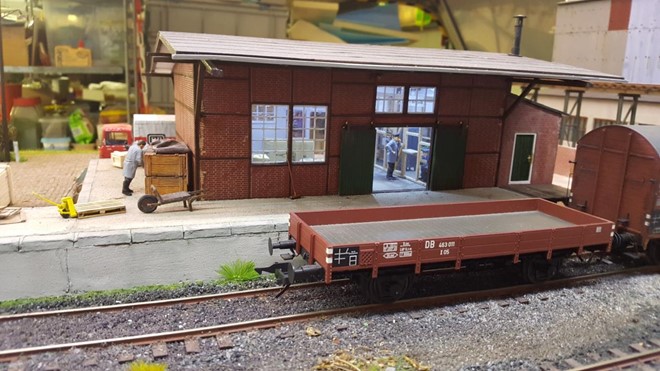
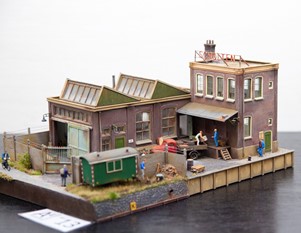
Diorama competition 2021
For this year too, Jeffrey Onrust has made a strong case for writing a diorama competition for 2021 in collaboration with the model railway magazine Railhobby and Eurospoor. This resulted in no fewer than 28 entries.
On the left you see the diorama of Peter Seuren, which won the 1st prize a few years ago from both the public and the professional jury. We are counting on many gems to be admired again this year. The assignment is that the diorama may not be larger than A4 size. Simple and simple under the motto: "Not too big, not too small. It should be possible to build it on an A4 sheet"! The diorama will be exhibited for 3 days at the fair and the award ceremony will take place on Sunday afternoon.
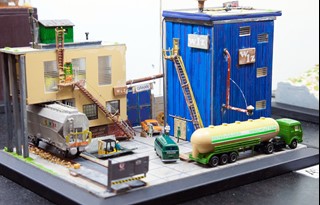
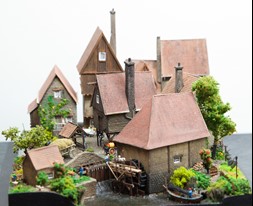
General Information
Eurospoor 2021 takes place from 29-31 October in the Jaarbeurs trade fair centre in Utrecht. It is a three day show open from Friday 10.00 to Sunday 17.00. Entrance tickets cost online € 19,00 / child upon the age of 12: € 8,00. Sunday 31 October: Entrance is free for children under the age or 12 with e-ticket.
Venue
Jaarbeurs trade fair centre (Railway station at walking distance).
Jaarbeursplein 6
3521 AL Utrecht
Netherlands
Information EUROSPOOR, Tel. 0031.299.640354
Opening times:
Friday 29 October 10.00 - 18.00
Saturday 30 October 9.30 - 17.30
Sunday 31 October 9.30 - 17.00
Tickets also online available (see website)
Disability access: Yes
Car parking: Yes
Organisation:
Eurospoor
Amazonelaan 86
1448 TN Purmerend, Netherlands
Tel. 0031.299.640354
Fax. 0031.299.646197
E-mail: eurospoor@eurospoor.nl
Website: www.eurospoor.nl
Check us on facebook:
www.facebook.com/eurospoor


